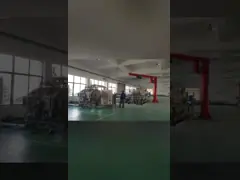
Ultra-High Wear Resistance Silicon Nitride Ceramics For Precision Instruments
Add to Cart
Ultra-High Wear Resistance Silicon Nitride Ceramics For Precision Instruments
Introduction
Silicon nitride ceramic guideway spacers are precision ceramic
functional components made from high-purity silicon nitride (Si₃N₄)
material through advanced sintering processes. This product
combines the excellent mechanical properties of silicon nitride
ceramic with unique self-lubricating characteristics, featuring
extremely high hardness, outstanding wear resistance, and
exceptional corrosion resistance. Specifically designed for
high-precision guideway systems, it effectively reduces friction
coefficient, minimizes wear, improves equipment positioning
accuracy, and extends service life, making it an ideal choice for
high-end equipment manufacturing.
Applications
Widely used in various high-precision, high-demand guideway
systems:
CNC Machine Tools: Precision guideway sliders, feed system spacers
Automation Equipment: Industrial robot guideways, linear module spacers
Precision Instruments: Measuring equipment guideways, optical instrument positioning spacers
Semiconductor Equipment: Wafer transfer system guideway spacers
Medical Equipment: Medical imaging equipment precision moving parts
Advantages
Ultra-High Wear Resistance: Vickers hardness ≥1650HV, wear resistance is more than 10 times that of bearing steel
Self-Lubricating Properties: Friction coefficient as low as 0.1-0.2, reducing lubrication requirements
High Precision Maintenance: Low thermal expansion coefficient, excellent dimensional stability
Strong Corrosion Resistance: Resistant to various chemical media corrosion
Lightweight Design: Density only 3.2g/cm³, reducing movement inertia
Specifications Table
| Parameter | Technical Indicators |
|---|---|
| Material Composition | Si₃N₄ ≥ 95% |
| Bulk Density | 3.2-3.3 g/cm³ |
| Vickers Hardness | 1650-1800 HV |
| Flexural Strength | ≥ 800 MPa |
| Surface Roughness | Ra ≤ 0.1 μm |
| Coefficient of Thermal Expansion | 3.2×10⁻⁶/℃ |
| Friction Coefficient | 0.1-0.2 |
| Operating Temperature | -50℃ to 1200℃ |
Manufacturing Process
Raw material preparation → Ball milling and mixing → Spray
granulation → Dry pressing → Cold isostatic pressing → Gas pressure
sintering → Precision grinding → Laser processing → Non-destructive
testing → Cleaning and packaging
Usage Instructions
Clean guideways and mounting surfaces before installation to ensure no impurities
Use special tools for installation, avoid impact loads
Recommended to install and use in clean environments
Regularly check wear condition, recommended inspection every 12 months
Use special tools during disassembly to avoid damaging ceramic surfaces
After-Sales Service
36-month quality assurance period, lifetime technical support.
On-site installation guidance available, regular maintenance
reminders provided. Customer usage files established, preventive
maintenance solutions offered. 24-hour technical response in
emergencies.
FAQ
Q1: What are the advantages compared to traditional metal spacers?
A1: Longer service life, better dimensional stability, lower
friction coefficient, and no need for lubrication maintenance.
Q2: Do you support custom sizes and shapes?
A2: Support complete customized production, can provide various
sizes and shape solutions according to equipment requirements.
Q3: How to detect spacer wear condition?
A3: Recommended to use precision measuring instruments to regularly
check thickness changes. Consider replacement when wear exceeds
0.1mm.

